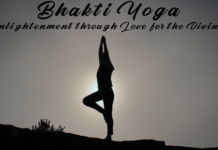Who would have thought Yoga, a simple, ancient Indian approach to everyday life would make everyone else in the world stand up on his or her heads, twist their torso, stretch limbs and breathe easy without any side effects? Yoga as a universal holistic approach for the mind, body and soul continues to fascinate humanity. However, how many of us are ready to accept that it works only if performed in its original state?
Understand why Yoga is cosmic energy
Half the battle is won when one understands the psyche of the enemy. The same holds true for every other thing in life. Before rushing off to join some quick fix yoga classes to reduce weight (the favorite reason why people are doing it today unfortunately!), try to comprehend what you expect by reducing your weight. Simply accepting the doctor’s advice or working out under peer pressure will not help. It is not just a physical activity like aerobics or step exercise. Not many new age yoga teachers will bother to know themselves about the its universal nature. Lord Krishna explained to Arjuna in the Bhagvat Gita, ‘I gave Yoga to the Sun before anyone else.’ The energy that the sun emits until today eternally is the primordial shakti that was given to it. Our sun is the part of a higher universe whose condensed energy that Krishna speaks. It is the Bhakti Yoga which is the part of Lord Krishna’s shakti through nature that helps us.
Therefore, please note any human being has not created Yoga but it has percolated from Godhead.
Who is a Yogi?
Simple, a person who does yoga is a yogi. Right? Wrong! Anybody and everybody cannot be a yogi. To attain the status of a Yogi, one has many obligations to fulfill. World famous Paramhans Yogananda, has penned ‘Autobiography of a Yogi’, which clearly gives a glimpse of what a true yogi is. A yogi is essentially an expert in the entire nine processes of Bhakti Yoga and not only asanas. For a layperson, Yogasnas help only if it is followed by the right procedure. Few teachers follow the ancient method of teaching. Today B S Iyengar is one of the living examples of a true teacher. His disciples are everywhere and follow the principals strictly. A true yogi follows a holistic approach to teaching followers
What one should learn from Yoga?
One has to formally adopt yoga as a way of life rather than just a short-term package. It is also wrong to believe that doing Yogasnas will not have any side effects. They need to be done properly so that they are effective. To make the body, work out first there should be mental peace. A good teacher always will begin with a short meditation session to bring the senses together. The mind has to be tamed before it can be focused to develop a taste for yoga. As the meditation calms down the mind, the body is ready to perform asanas. A nice warm up session with padmasana helps the limbs and arms to get used to a work out. Doing Yoga is more of a spiritual exercise. While doing any of the ansanas one is bowing to the energies of the nature, which are provided by God. In addition, by performing asanas one is acknowledging the powers. It is then that the universal energy transfers in the human body and creates a feeling of happiness. Now which other work out is capable of energizing the mind, body and soul simultaneously?
Eating habits largely define our mode of nature. Yoga helps one to maintain equanimity with our dietary habits. Eating and exercising at the right time helps much more in the end if the teacher gives guidance. There are many forms of yoga’s being taught today. Which one is appropriate is quite confusing. Before joining, it is quite essential to find out more details of the yoga techniques being taught. One cannot perform one type of Yoga without knowing the basics of Yoga itself. It is like learning a bit of a course study even before one has qualified to enter the next class! Therefore, if it does not help disappointment is natural. Some of the different types of Yoga techniques that are prevalent today include :
- Hath Yoga
- Kundalini Yoga
- Kriya Yoga
- Asanas
- Dhyan Samadhi
- Ashtang Yoga
- Agni Yoga
- Karma Yoga
- Pranayams etc.
Every guru has a signature style and is being popularized depending on its success. Various gurus in India have their own schools, qualified and certified teachers.
It is only now that the world has noticed yoga. In India it has been practiced for centuries. More yoga gurus have left Indian shores to teach the goodness of yoga-which heals the mind, body and soul. Swami Yogananda was influential in popularizing yogic techniques in overseas like U.S.A and Europe. The aim and motto of yoga can vary from person to person. A peaceful, tranquil, balanced and fit body is not the only evident form of Indian yoga.
The word “yog” means union; typically, “yoga” means union God. There are many forms of yoga that lead to the Almighty.
- Bhakti (devotional)
- Jnana (intellectual approach)
- karma (work oriented)
- Raja (meditation)
The last mentioned is the most powerful of all. The yoga sutra of Patanljali mentions the 8 stages.
- Yamas (social ethics)
- Niyamas (personal ethics)
- Asanas (body postures)
- Pranayama (breathing techniques)
- Partyahar (mental concetration)
- Dhrana (intense mind control)
- Dhyana (advanced mind control)
- Samadhi (Sound Meditation)
The modern forms popularized by some Indian yoga gurus are Hatha Yoga (for total enlighten) and Tantra Yoga (Esoteric nature). Rishikesh is considered as the Yoga capital of the world. Indian yoga professionals teach physical postures popularly called asanas. It is said to be the oldest method of personal development that increases physical strength, stamina, flexibility and finally spiritual growth.
Little known Yoga
Tibet, the cloistered nation near the Himalayan Mountains has maintained some of the purest forms of yoga, Buddhist practices and cultures. Introduced between 988-1069, Tibetan Buddhist Six Yogas of Naropas, which were taught by a lineage of gurus. Even the current Dalai Lama is an expert in these yogic forms. This unique form helps in the enlightenment of the soul and liberation too from the cycle of birth and death.
The six forms are:
- Tummo-Mystic Heat,
- Gyulu-Illusionary body,
- Milam-Dream state,
- Osel-Clear light,
- Bardo-Intermediate state,
- Phowa– Transference of consciousness (expulsion of the mind from the body).
Karmpa, the first figure in Tibetan Buddhism to reincarnate has been strongly associated in certain reincarnations with some yogic attributes. Tummo helps the individual to open up oneself. This is the first step to higher meditation and the other five yoga forms. Milam encourages one to use the dream state for internal purification. It clarifies confusion about illusionary state (Maya) and Nirvana (any other dream world that one goes into). Dream will eventually remain dreams. However, one has to be able to transform into a Rainbow Body while in Bardo state (between death and next life).
Do not take yoga lightly. It is an ancient way of life, has taught survival techniques to millions of generations. Learn it, respect it and encourage others to adopt it in the right mind, body and spirit!



